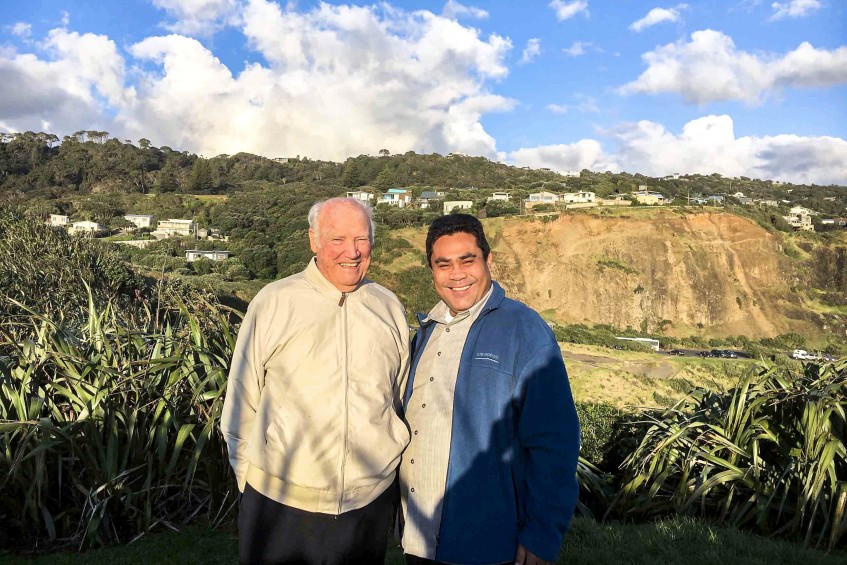Salesian priest captures ACPA’s lost history in ‘What’s the Story?’

Australian Catholic Press Association Life Member Father Frank Freeman SDB at the 2018 ACPA awards. He is the author of “What’s the Story?”. Photo: Neil Helmore.
By Amanda Murthy
No stranger to the world of journalism, Australian Catholic Press Association (ACPA) Life Member and Editor of the Salesian Bulletin Father Frank Freeman SDB, made it his business to dedicate 10 years of his life (2009 to 2019) to re-visit and re-tell the rich history of ACPA.
This came after a disappointing discovery in the 1990s revealed, that an extensive amount of its archives went missing, thereafter, much of its’ information were not recorded.
The result – What's the Story? Volume 1, Policies and Personalities, capturing the highs-and-lows of the association’s 65-year journey, in an interactive, narrative form.
Readers can expect interviews, as Fr Freeman seeks input from well-known personalities, tracking down secondary sources from member publications, Archdiocese records, public libraries, universities, and so forth.
The book made its debut at the 2019 ACPA conference held in Bathurst from 10 to 12 September.
In an exclusive interview with The Record, the 88-year-old priest explained why it was incredibly vital for him to take on this particular project and talks about the group of people who further encouraged his decision to do so.
“Multiple issues coincided to affect the association at the same time, meaning that the newer members - many who were young journalists, had no knowledge of the association; its mission and role within the Church,” Fr Freeman said.
“The early records of the association were lost in the 1980s. Very few records were kept after that date, and the older two generations of members had passed on so there became a vacuum of knowledge.
“It soon became essential that the history of the association, its origin and past policies and personalities should be made known to these new members as in doing so, would empower them to become active and appreciative as members of the association,” he added.
Describing the book as a story of dedicated men and women spanning generations, who were fully engaged in the ministry of information as a part of the Churches mission of evangelisation, Fr Freeman suggested that perhaps the newer and younger association members could appreciate “flesh and blood” treatment, featuring the photos of the many personalities and problems of the past.

“What’s the Story”, launched in September 2019, explores the policies and personalities of ACPA from 1955 to 2018. Photo: The Record.
“I was especially pleased with the comment of one reader who stated: ‘It is not all history. In parts it resembles a family album’, Fr Freeman stated.
“A family album! I like that for a family album records with warm and appreciation all of its valuable members and their works and as such, bears greater appeal to the reader.”
Fr Freeman said that as much as he provided the facts, it was the role of student that he equally embraced, admitting that he was able to learn some new things and deepen his knowledge through this project.
“A spotlight highlights a small area while a flood light lightens up the whole,” Fr Freeman added.
“Each decade, the story told of difficulties and problems yet from them, came new insights and a more sensitive understanding and co-operation towards one another in a shared ministry.

Fr Freeman dedicated 10 years to researching the history of ACPA. He documents it in his book “What’s the Story”. Photo: Supplied.
“An example of this was the conflict between the rights and duties of a Bishop in opposition to their editors demanding journalistic freedom. With a growth of, and appreciation of, each other’s true pastoral role, responsibility and yes, even the growth of friendship, such conflicts overall seem to have evaporated.
“Another insight gained from the research was the ever-growing appreciation of the outstanding personalities that have graced the years of the association’s life, all of which have been celebrated in the book,” Fr Freeman went on to state.
With a 36-year ACPA membership and 40 years in the governance of schools (mainly diocesan regional colleges) under his belt, the priest-editor spoke candidly about some of his highlights of his journey with the association.
“I found being a member of ACPA a very refreshing experience. I saw my role as a ministry of encouragement for my colleagues and fellow editors as well as offering them priestly ministry,” Fr Freeman cited.
Fr Freeman added that his hopes for ACPA that it will continue to be a ministry of encouragement for all its members and for their Church communities.
“Preserve the past: for there are valuable lessons to be learnt from it, present the present: truthfully in all verifiable realities, and yet flavour the future: for all the hopeful betterment that it may contain,” Fr Freeman continued.
“In doing so, may the ACPA have the blessings of God upon it.”
ACPA currently has 138 members, which is made up of 73 member publications and 64 associate members. It has been at the forefront of Catholic press in Australia since 1955, including Editors, Journalists, and Graphic Designers from a wide range of Catholic publications across Australasia. This includes Australia’s oldest weekly publication The Record (establish in 1874), which progressed to operate as an online portal since March 2016.
